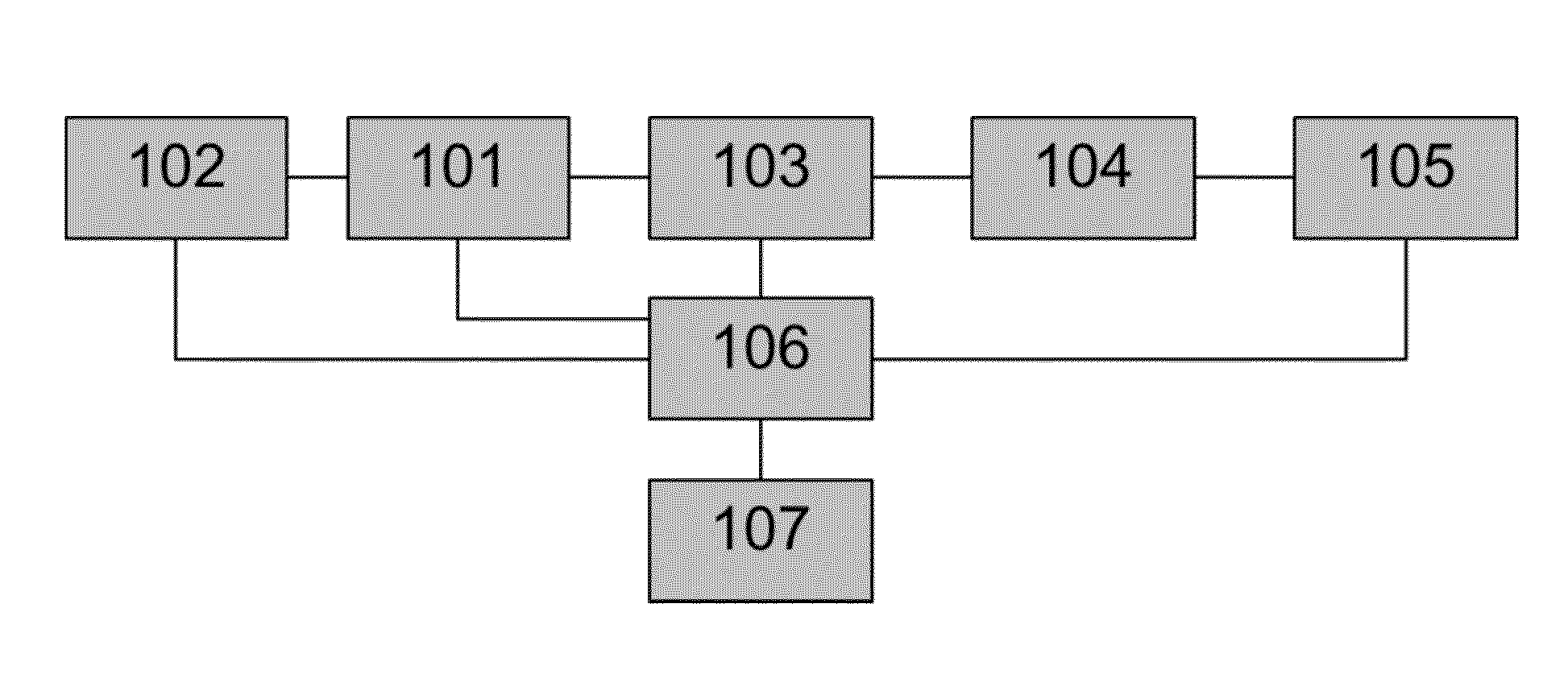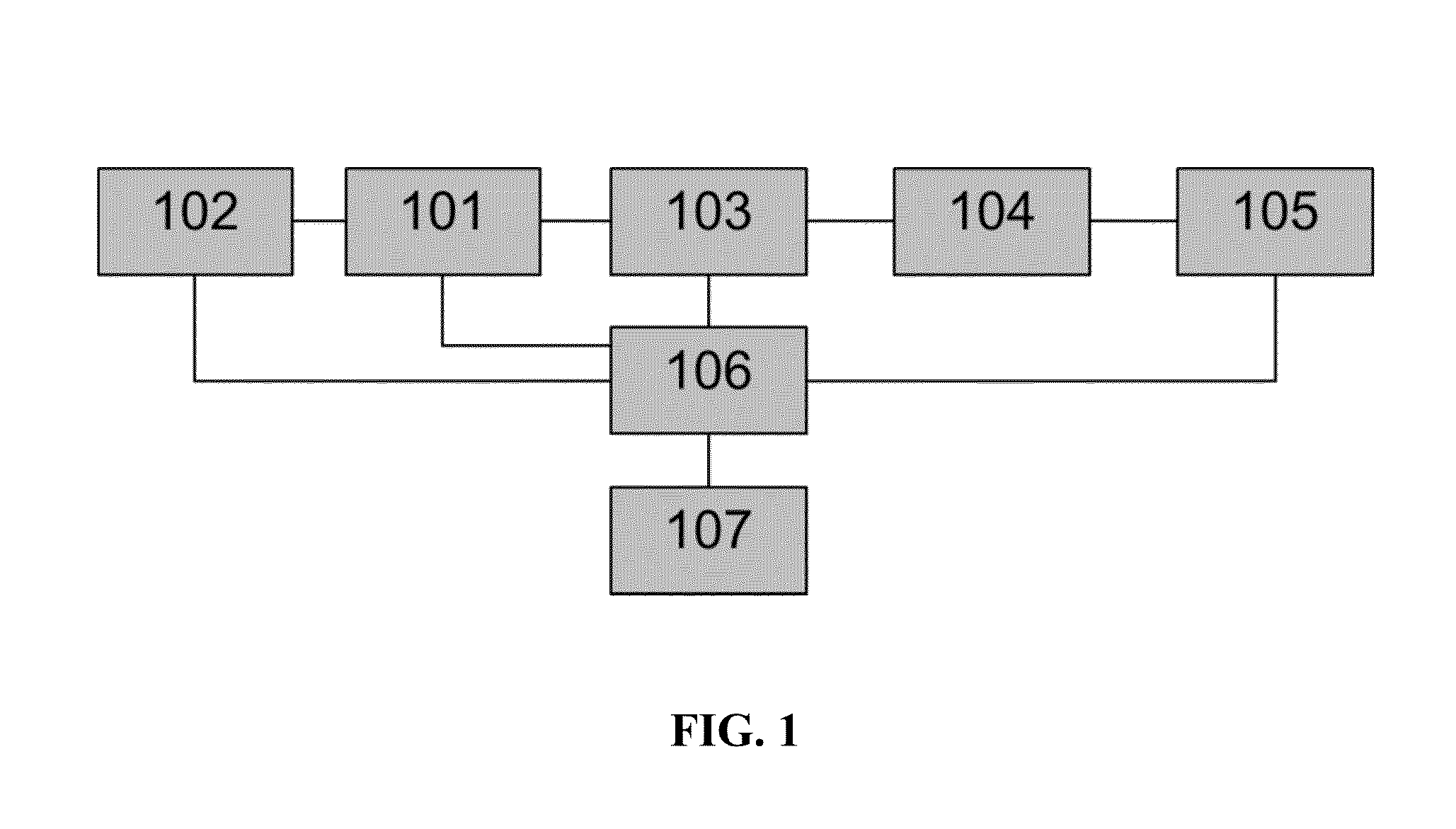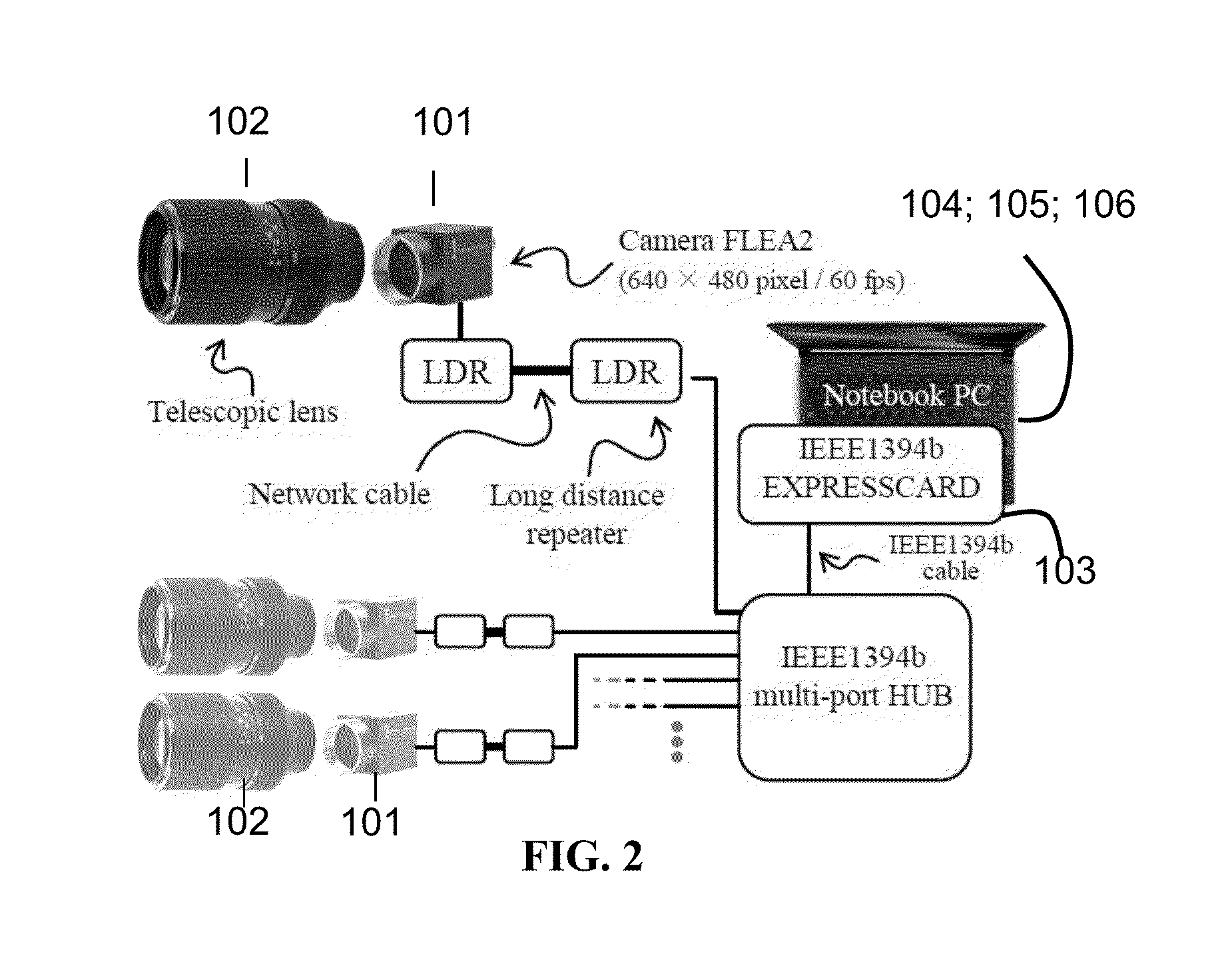Displacement monitoring system having vibration cancellation capabilities
a technology of displacement monitoring and capability, applied in the field of displacement monitoring system with vibration cancellation capability, can solve the problems of difficult, and/or impracticable, civil engineering structure exposed to various loads, and achieve the effects of enhancing stability for long-term monitoring, facilitating interference, and speeding up setup
- Summary
- Abstract
- Description
- Claims
- Application Information
AI Technical Summary
Benefits of technology
Problems solved by technology
Method used
Image
Examples
example 1
[0053]A predesigned black and white target panel having a height of 218 mm and a width of 280 mm was fixed to an electromagnetic shaking table. A digital video camera with a 75 mm lens was placed at a stationary position 5.5 meters away from the table. A linear variable differential transformer was installed between the shaking table and a stationary reference point for purpose of comparison.
[0054]The shaking table was operated at frequencies from 0.1 Hz to 5.0 Hz with a constant amplitude of 50.0 mm. Subsequently, the shaking table was driven by a recording of the ground motion of the 1995 Great Hanshin-Awaji earthquake. At each frequency, digital image information was collected by the camera for 60 seconds at a frame rate of 60 frames per second. Using the size of the target panel, the distance of the camera from the target panel, and the number of pixels of the digital video camera, pixel size was determined to be 0.54 mm / pixel, and the theoretical error of the OCM algorithm foun...
example 2
[0058]Displacement of the Vincent Thomas Bridge, a 1500-ft long suspension bridge in California, was measured with and without use of a target panel. Two synchronized video cameras located at a stationary location 300 meters from the bridge were trained on the bridge, one focused on a pre-existing 800 mm×750 mm target panel having a random pattern of black and white squares, and the other focused on existing rivets and edges of the bridge adjacent the target panel. The cameras had a pixel density of 640×480 pixels and a frame rate of 60 frames per second.
[0059]The experimental setup is shown in FIG. 10A, and representative images of the target panel and rivets are shown in FIGS. 10B and 10C, respectively. The pixel size was calibrated using the target panel and calculated to be 3.01 mm. The bridge was recorded in the morning and again in the early evening; the Michelson contrast of the images recorded in the morning was measured to be 0.63, while the Michelson contrast of the images...
PUM
 Login to View More
Login to View More Abstract
Description
Claims
Application Information
 Login to View More
Login to View More - R&D
- Intellectual Property
- Life Sciences
- Materials
- Tech Scout
- Unparalleled Data Quality
- Higher Quality Content
- 60% Fewer Hallucinations
Browse by: Latest US Patents, China's latest patents, Technical Efficacy Thesaurus, Application Domain, Technology Topic, Popular Technical Reports.
© 2025 PatSnap. All rights reserved.Legal|Privacy policy|Modern Slavery Act Transparency Statement|Sitemap|About US| Contact US: help@patsnap.com



